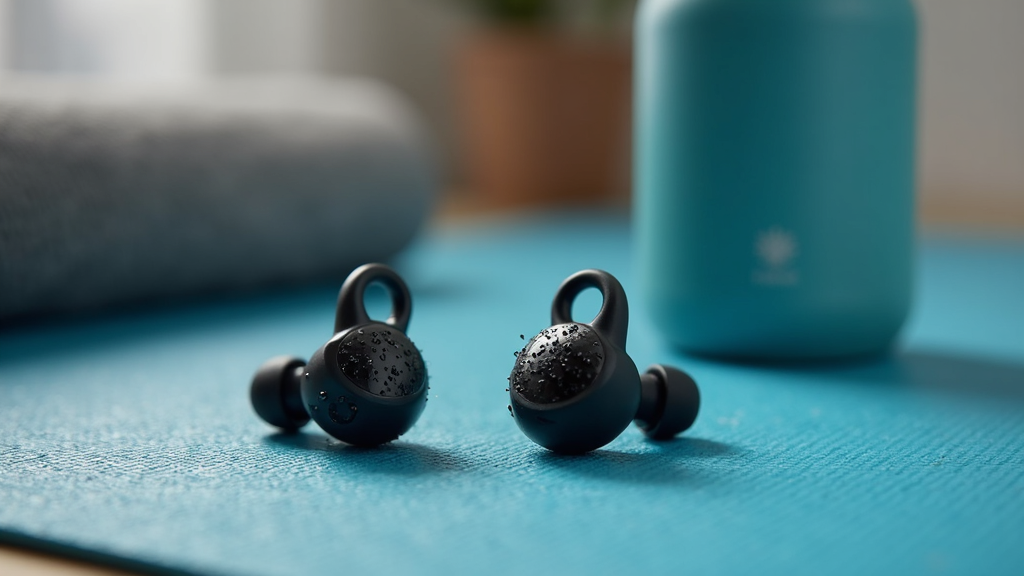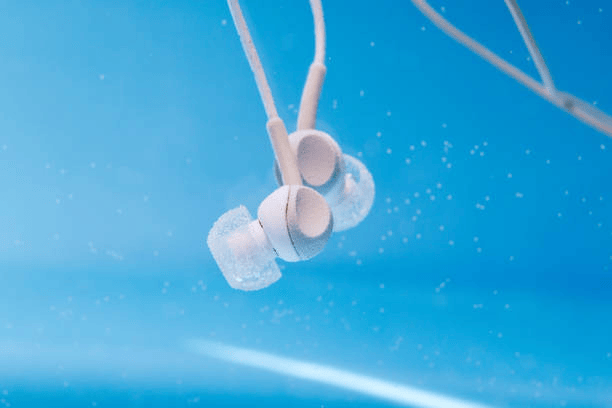Picking the right headphones for workouts can make every rep feel smoother and every jog a little faster. Whether I’m hitting the gym, running in the park, or smashing out a HIIT session at home, having the right headphones can keep me motivated and help me stay focused on my goals. The market offers a massive selection, and trying to pick the perfect pair can feel a lot like hunting for a needle in a haystack. Here’s my personal guide to finding the best headphones to work out with, based on plenty of sweat, trial, and error.

Why the Right Workout Headphones Make a Difference
Good headphones go beyond just playing music. I find that the right fit, sound, and features help keep distractions away and energy levels up. For me, it’s not just about bass or volume; it’s also about how well they stay in place, how comfortable they are during a long session, and whether sweat will send them into retirement after a few weeks.
Fitness headphones used to be pretty basic, but the market has grown fast, with new models built for all sorts of training needs. Market research shows that true wireless and sports headphones have become super popular, thanks to tech like water resistance and noise cancelling mics. The better brands now test their headphones for tough conditions, which makes it easier to find something reliable even when workouts get intense.
Workout Headphones: Main Types and Key Features
The type of headphones matters just as much as the brand. There’s a ton of personal preference here, but knowing the general categories helps narrow things down. Here are the most common options for working out:
- Earbuds: Lightweight, portable, and usually sweatproof. True wireless earbuds (no wires at all) are awesome for freedom of movement.
- OnEar/OverEar Headphones: Offer powerful sound and noise isolation, but they can get sweaty and might not be as stable during vigorous activities.
- Bone Conduction Headphones: Sit on your cheekbones and leave your ears open, making them useful for runners and cyclists who want to stay alert to their surroundings.
Here are the features I focus on when making a choice:
- Sweat and Water Resistance: Look for IPX rating (at least IPX4 for sweat). Higher ratings like IPX7 offer water protection if you get caught in the rain.
- Secure Fit: Flexible ear hooks, stability fins, or customizable tips keep earbuds in place during jump squats or sprints.
- Battery Life: If I’m into long runs or strength sessions, I check for enough battery to last—something like 6 to 8 hours for buds, 20 hours or more for larger headphones.
- Controls: Touch or physical buttons help me skip tracks or adjust volume without fumbling for my phone mid-set.
- Sound Quality: I want energizing sound and deep bass, but not at the cost of distortion or ear fatigue.
Best Headphones for Different Workout Styles
No two workouts look the same, so I tailor my gear to the type of activity I’m doing. Here’s what I’d recommend for some common routines:
Running and Cardio
For running, I want wireless earbuds that stay put. There’s nothing worse than stopping mid run to adjust them. Lightweight models with stability fins or wings are really helpful. I like options with ambient mode so I can hear traffic for safety. Battery life doesn’t need to be marathon length for daily jogs, but anything over 5 hours is comfortable.
Strength Training and Gym Workouts
For lifting or circuit training, I prefer sweat resistant buds with solid bass. Noise isolation is nice so I can tune out gym music and focus. Larger over ear headphones can give a bit more kick in the sound, if comfort is high enough and sweat isn’t an issue.
Cycling or Outdoor Sports
Staying aware is really important for outdoor cycling. I go for bone conduction headphones to keep my ears totally open or use slim earbuds with ambient sound features. Secure fit and rain protection are non negotiable for rides in unpredictable weather conditions.
Swimming or Water Sports
For swimming, completely waterproof earbuds with an IPX7 or IPX8 rating are standard. Some models let me load music directly onto them, so I don’t have to carry my phone. These are a must for anyone who spends serious time at the pool or in open water, and comfort really matters for long swim sessions. Some brands even offer interchangeable swimming tips to help with secure fit underwater.
Quick Guide to Picking Your Workout Headphones
My basic process for choosing a set of workout headphones looks something like this:
- Set Your Budget: Figure out what you want to spend; solid models can be found at all price points.
- Prioritize Fit and Comfort: Try different earbud tips or headband sizes if you can, and look for adjustable models.
- Check for Durability Features: Sweat and water resistance ratings are worth double-checking.
- Think About Battery Needs: Pick headphones with at least a couple of sessions’ worth of charge if you’re on the go.
- Test Controls: See if you like button or touch controls—nobody wants to interrupt a workout just to pause a song.
- Read Reviews and Watch Demos: Honest feedback from other users or video tryons can highlight quirks or comfort issues.
Some people also check compatibility with digital assistants, voice prompts, or the ability to switch easily between devices, depending on their daily habits. If you use a smartwatch, make sure your headphones can connect smoothly.
Common Challenges With Workout Headphones (and How to Handle Them)
Even the best headphones come with some real-world trade offs. Here are a few problems I’ve faced, and how I get around them:
- Slipping Out of Ears: If earbuds fall out during jumping or running, I try using memory foam or silicon ear tips, switch to ear hooks, or try a different shape. Brands often include several tip sizes, so swapping them is quick.
- Sweat Damage: Sweat can ruin electronics. I stick with sweat-rated models, avoid using non gym headphones for workouts, and wipe them down after each session. Cases with built-in vents or silica packs help, too.
- Poor Connection: Spotty Bluetooth is a vibe killer. I look for models using newer Bluetooth versions (5.0+) and keep my phone’s firmware up to date. For stubborn interference, resetting the pairing helps.
- Battery Dies Fast: Frequent charging is annoying. I keep a charging cable in my gym bag or pick headphones with quick-charge features for backup.
- One Earbud Cuts Out: Dirt or sweat in charging contacts can cause this. I clean both the earbuds and their charging case regularly.
Slipping Out of Ears
Earbuds that don’t stay put make every workout tougher. Double-checking for a snug fit, swapping in custom tips, or choosing models with extra stability options like fins fixes this problem most of the time. When I do high jump squats or burpees, secure fitting earbuds are a game changer.
Sweat Damage
Even water-resistant headphones need a little care. Keeping them clean and letting them air dry keeps them working, especially if I train daily. If I sweat a lot, I prefer models with a higher IPX rating for added security. Some brands also supply replaceable covers or sleeves, which add an extra layer of protection.
Advanced Tips for Getting More Out of Your Workout Headphones
A few tweaks can take my workout audio experience to the next level:
Download Offline Playlists: Streaming kills the battery faster and relies on a solid connection. Downloading favorite tracks means no interruptions when WiFi drops out at the gym, and I don’t have to worry about lag during tempo runs.
Update Firmware Regularly: New updates can fix bugs, add features, or improve battery life. I like to check my headphone app every couple months. Keeping software up to date also makes it easier to pair with new devices or fix random issues.
Customize Audio Presents: Apps often let me tweak EQ settings or set up custom profiles. Punchier bass or clearer vocals can completely change workout energy. Don’t be afraid to experiment, since some days you might want more focus, while others call for a dance-party vibe.
Use Tile/Find My Headphones: Some models support tracker technology in case I misplace them mid routine. This feature has saved me more than once, especially when headphones have been left in gym lockers or the car.
Experiment With Ambient Modes: Trying out transparency or passthrough features keeps me safer during outdoor runs or when I need a quick chat with a workout buddy. Adjusting how much noise comes through offers control over awareness without missing beats.
What Are the Best Workout Headphones Right Now?
There are some models that consistently pop up as favourites for fitness:
- Jabra Elite Active Series: Rugged earbuds with excellent fit and sweat resistance. My top pick for mixed workouts.
- Beats Power beats Pro: Ear hooks and deep bass, great for fast paced routines and high impact training.
- Bose Sport Earbuds: Stability and rich sound, with a case that charges up fast for quick gym trips.
- AfterShokz OpenRun: Bone conduction headphones that make outdoor workouts safer and more comfortable for people who prefer open ears.
- Sony WF-SP800N: Noise cancelling, water resistance, and extra bass make these a solid choice for gym lovers.
Each brand has a slightly different take on comfort and durability, so it’s worth trying a couple out before making up your mind. If you frequent different workout environments, you might even want to keep two pairs handy—one for sweaty HIIT and another for casual stretching or yoga sessions.
Frequently Asked Questions
Here are a few quick answers to the questions I get most about workout headphones:
Q: Can I use regular headphones for working out?
A: Regular headphones can work, but models not rated for sweat and moisture probably won’t last long if you use them for hard training. Specialized sports models give better durability and comfort.
Q: Are wireless headphones better than wired for exercise?
A: Wireless headphones are more practical for most workouts because they won’t get tangled or snagged. Some wired models offer great sound, but wireless tech has basically become the standard for fitness.
Q: How do I clean sweatproof headphones?
A: I use a soft, lightly damp cloth to wipe them down after each session, take off any removable tips for a deeper clean, and let everything air dry before storing them in the case. Avoid using harsh cleaners. If you travel with your headphones, consider a case with vents to prevent moisture build up.
Q: Can I swim with my workout headphones?
A: Only headphones marked with an IPX7 or IPX8 rating are suitable for swimming. Most regular sports earbuds aren’t meant to be fully submerged, so check the specs before taking a dip. Also, be sure to choose models designed specifically for underwater audio—regular Bluetooth will not work underwater, but offline music transfer or built-in MP3 storage options are available in swim models.
Making the Right Choice
Choosing the right workout headphones makes a big impact on how much I enjoy my routine. Whether I’m aiming to beat my running record or finish another set, the music has to keep up. Trying out a few different styles and paying attention to comfort and durability has helped me land on favourites that make exercise feel a little better every time. Happy training! Thanks for checking this post out feel free to to leave a comment, ask questions and be sure to look on the other posts for everything fitness.


